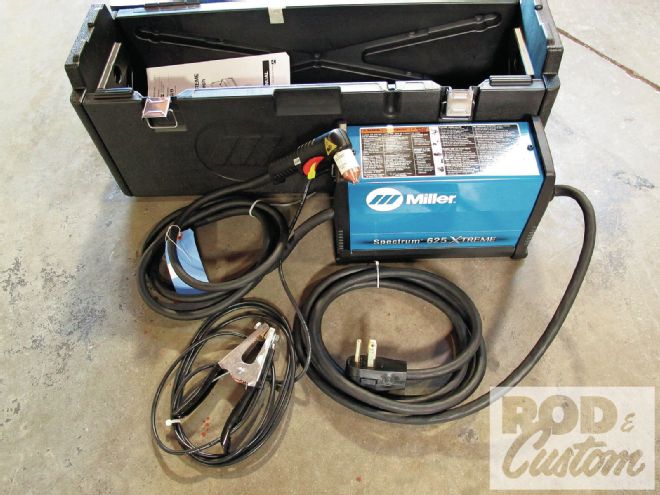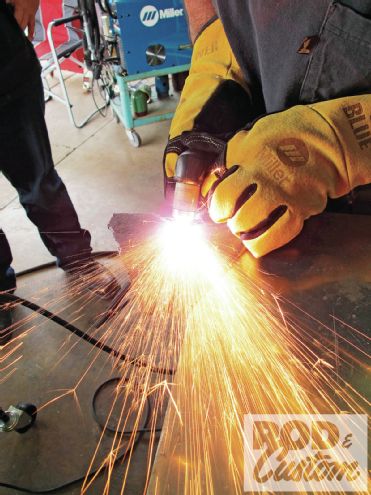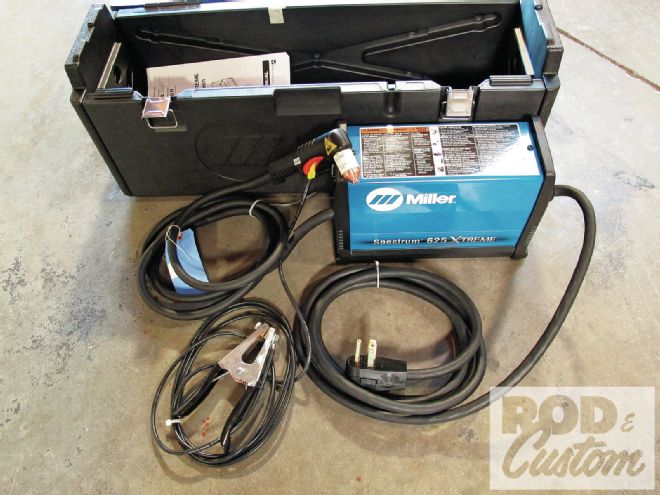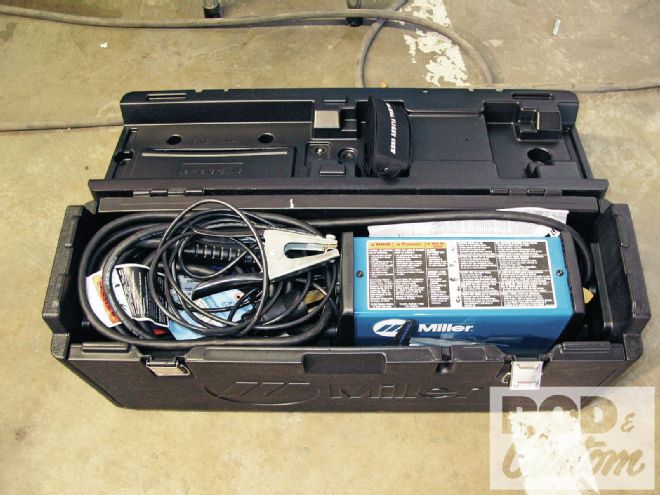
As we’ve illustrated elsewhere in this month’s issue, there are numerous ways in which to sever metal of all shapes and sizes—in all shape and size manners. Whether it’s a nice, clean bandsaw cut or ragged-edge torching, the end result ultimately relies and depends upon the tool that’s used in the first place. Two things to take into consideration when acquiring specific metal-cutting tools are cost and application. For general use, an electric grinder can accomplish various tasks at a very affordable price; for more frequent use, along with the aforementioned bandsaw, a good plasma cutter will go a long way in all facets of fabrication. But with the increased applications come increased prices, obviously. It’s up to you to determine if the investment’s “worth” it or not as far as time and effort savings go.

In simple terms, this particular cutting process is achieved by mixing compressed air with an electrical charge that ultimately produces “plasma”. In stark contrast to an oxy-acetylene torch, which produces heat somewhere in the range of 5,000 degrees F, a plasma arc puts out eight times that at nearly 40,000 degrees F. Yet, at the same time, the resulting cut does not have the same affects caused by the heat as it would using a torch: minimal slag and material distortion, even with thinner metals. Furthermore, the intense heat does have the ability to burn through pretty much any surface coating, including rust (though proper surface prep is always recommended).
 New meaning is given to the term “porta-power” with Miller’s Spectrum 375 and 625 X-Treme plasma cutters. Modern technology has allowed a drastic reduction in physical size without reducing power output—quite the opposite. The 18-pound 375 puts out 27 amps (at 92VDC/36 percent duty cycle) able to handle up to 3/8-inch material thickness; the 625 comes in at 21 pounds, putting out 40 amps (at 140VDC/50 percent duty cycle) with a 5/8-inch cutting capacity (both using 230V input).
New meaning is given to the term “porta-power” with Miller’s Spectrum 375 and 625 X-Treme plasma cutters. Modern technology has allowed a drastic reduction in physical size without reducing power output—quite the opposite. The 18-pound 375 puts out 27 amps (at 92VDC/36 percent duty cycle) able to handle up to 3/8-inch material thickness; the 625 comes in at 21 pounds, putting out 40 amps (at 140VDC/50 percent duty cycle) with a 5/8-inch cutting capacity (both using 230V input).
In the past, your average plasma cutter was roughly the same size as your MIG welder. Not anymore. Miller’s Spectrum 375 and 625 X-Treme series plasma cutters have changed the way we look at—and use—portable plasma systems by offering a powerful punch in an ultra-compact machine. Just in the last few years alone Miller has been able to reduce the physical size of their plasma cutters without having to sacrifice power output: the 375 X-Treme weighs in at a measly 18 pounds while producing a 27-amp arc capable of cutting 3/8-inch material; the 625 packs an extra 3 pounds and a cutting capacity of 5/8-inch mild steel at 40 amps (both based on a travel speed of 10 inches per minute using 230V power input).
Both Spectrum X-Tremes feature Miller’s proprietary Multi-Voltage Plug (MVP) and internal Auto-Line circuitry, allowing the use of 115V or 230V single-phase power source without having to change anything except the plug. Simplifying matters even more, air pressure regulation is preset, meaning all you do is connect the air hose and let the machine do the rest. The only “fiddling” required for the end user is to set the power output according to the specific type and thickness of metal being cut.
 New meaning is given to the term “porta-power” with Miller’s Spectrum 375 and 625 X-Treme plasma cutters. Modern technology has allowed a drastic reduction in physical size without reducing power output—quite the opposite. The 18-pound 375 puts out 27 amps (at 92VDC/36 percent duty cycle) able to handle up to 3/8-inch material thickness; the 625 comes in at 21 pounds, putting out 40 amps (at 140VDC/50 percent duty cycle) with a 5/8-inch cutting capacity (both using 230V input).
New meaning is given to the term “porta-power” with Miller’s Spectrum 375 and 625 X-Treme plasma cutters. Modern technology has allowed a drastic reduction in physical size without reducing power output—quite the opposite. The 18-pound 375 puts out 27 amps (at 92VDC/36 percent duty cycle) able to handle up to 3/8-inch material thickness; the 625 comes in at 21 pounds, putting out 40 amps (at 140VDC/50 percent duty cycle) with a 5/8-inch cutting capacity (both using 230V input).
Additionally, the Spectrum 625 X-Treme has a few more built-in features: Auto-Refire (reducing trigger control when cutting inconsistent-surface material, such as expanded metal), Fan-On-Demand, and automatic consumable detection (identifies consumables and adjusts accordingly).
Whether it’s sheetmetal fabrication or chassis repair (or vice versa), Miller Spectrum X-Treme plasma cutters are to hobbyist garages as microwaves are to housewives’ (and husbands’!) kitchens—they can do it all. All you need is an adequate power source and a 90- to 120-psi compressed (and filtered) air supply. And as you’ll see in this and the following chapter next issue, there’s a whole lot more to plasma cutting than you may think.